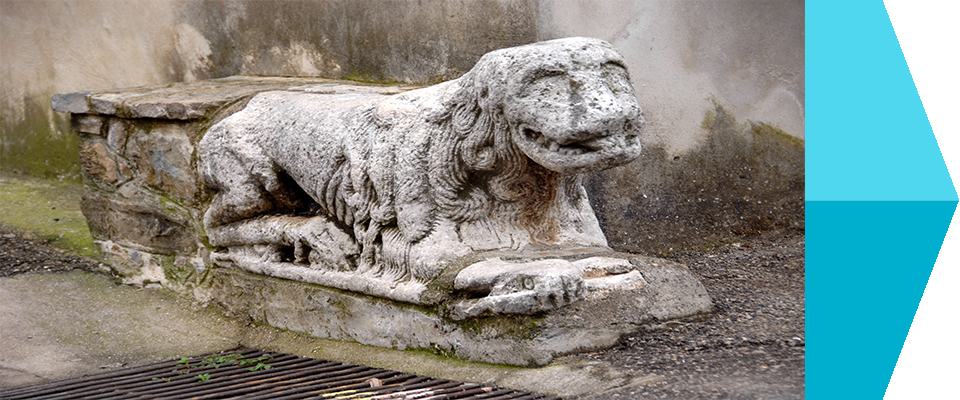
The feud of Capaccio was later granted by King Frederick to the sister in law Caterina della Ratta, daughter of the Count of Caserta and Anna Orsini of principles of Salerno, who had married the illegitimate son of King Ferrante, Cesare d'Aragona.
When he died, Catherine married Andrea MatteoAquaviva, Duke of Atri, but not having had sons both from the first that fromher second husband, goods returned to the crown. Ferdinand the Catholic, after the death of Roberto Sanseverino, wanted the widow to marry Giacomo Appiano, Lord of Piombino, entrusting the orphan Ferrante of two years to the Catalan Grand Admiral Bernard Villamare,ordering the viceroy of forming «a state » with Capaccio, Altavilla,Pisciotta, Tito, Calvello and Satriano to donate to the admiral. Padula was included too.
The King confirmed, but the inclusion of Padulawas later revoked.Padula and Buonabitacolo were then donated to John Cardona.Ferrante married Isabella Villamare, « the most beautiful and virtuous ladyof his age ».The feud of Capaccio then returned to the Crown that sold it in 1578 to Cesare d'Avalos of Aragon for a price to be settledof the four and a half percent. Cesare alienated Capaccio andAltavilla in favor of Nicholas Grimaldi, son of Augustine, ofprinciples of Monaco for the same price paid by the Curia (D. 69.637.33).
By Nicholas, Augustine and then another Nicholas who diedcelibate. He was succeeded by uterine brother Nicholas Doria because the mother(Isabella Tolfa) had married later Marcantonio Doria who had obtained the title of Prince of Angri February 201636.
A Marcantonio was inherited the title of Duke of Eboli. The title of Count of Capaccio, however, was granted to Nicholas Doria on 4 October, 1659. The county continued to be owned by the Doria. From adescendant, another Marcantonio (d. May 21, 1760), first the county, withConvincenti, Giungano, Lagopiccolo and Cripta went to Giovan Carlo Doria (December 12, 1761). It was succeded by Marcantonio, first offamily ascribed to the Golden Book of Naples. From him, Giovan Carlo(N. 1788) and Francis (b. October 15, 1797 M.9 May 1874), which by Giulia Caracciolo, principles of Avellino, had Marcantonio (7 Sep-tember 1824 m. May 12, 1870), husband of Laura Marullo, the DukesS. Cesareo, and the father of Francis (b. July 16, 1855).
This, with Ministerial Decree of July 21, 1901, was recognized in the legitimatemeet the above titles with that of Marquis for coming provenance from the Genoese aristocracy, patrician of Naples and Genoa,Prince of Centola and Marquis of Pisciotta and predicates Montella, Giungano, S. Serio and Molpa, with whom was ascribed to theGolden Italian Book, with his brother Ernesto (n. February 16, 1863) andsisters Julia, married Siciliani Renda, Mary, married Baracco, Isabelbeautiful, married companion, and Teresa, married Bonelli. Doria seems to bebelonged also the hamlet of Castinatelli.Do note here some news related to the bishops of the diocese andthe same Capaccio.Gatta speaks of bishops, including Msgr. Odoardi that from Salatransferred the seat of the diocese in Villa di S. Pietro namely in New Capaccio.
He doesn’t speak about the origin of the city, on the famous conspiracy ofArnolfo first bishop who said of Capaccio, the discoveryfirst among the ruins of Paestum the sacred remains of the Evangelist Matthew, ofassistants of the bishop (two vicars and a Hearing Officer in the margins) in governmentthe diocese and also rents the mess that his bishoptimes amounted to ducats 6,000 per year.Pacichelli says «City new [that] called Capacciofor its water », then destroyed by Frederick II in 1246. Citythat «rises in a high hill, but sour, with a strong and Castleinespugnabiie for the site. »
The old town was sparsely inhabited itstimes. The vast diocese of 150 nautical miles long, 140 'Ville and Ca-salts «of which 12 belonged to the monastery of Cava. In his day therewere three convents of Celestine, two of Olivetans two Virginians, twoSant'Agostino Carbonara, four cappuccinos, seven Dominicans.
Antonini, after saying about the name (Capo d'acqua) and bishops from Paestum, then from Capaccio, mentions the tributes (datia) that the local people paid to avoid the Saracen raids andlooting. He places New Capaccio on rocky ground, and in his time« populated, making Bishops often their residence». «Very vast territory that reaches until Spinazzo and Sele» .
Di Stefano says about the synod of 1629 Msgr.Brancaccio, the conspiracy, the siege of the fortress and its falland destruction of Capaccio and Altaviila.Then alludes to churches and houses disappeared in the surroundings of the town,the «swamp Lucan, » S. Manfredo whose remains were atime in the cathedral of Capaccio, but he lingers on the «swamp of Gavdos»(News from an appreciate Capaccio of 1592) and the marshes called «Le strette, Cerzagallara and Tufarella ».
Giustiniani mentions Capaccio old « on Mount Calamarcum, Calamatium, Calpatium »,its fertile land, water na-tural (iron and sulfur), the Salty river and brackish sources. To histimes the village was inhabited by 1820 between farmers and herders.

From 26 to 28 August 2022
2° Festival Internazionale di Teatro di Strada e Arti Performative
See moreLATITUDE: 40.4248153
LONGITUDE: 15.076969899999995
GO TO GOOGLE MAPS